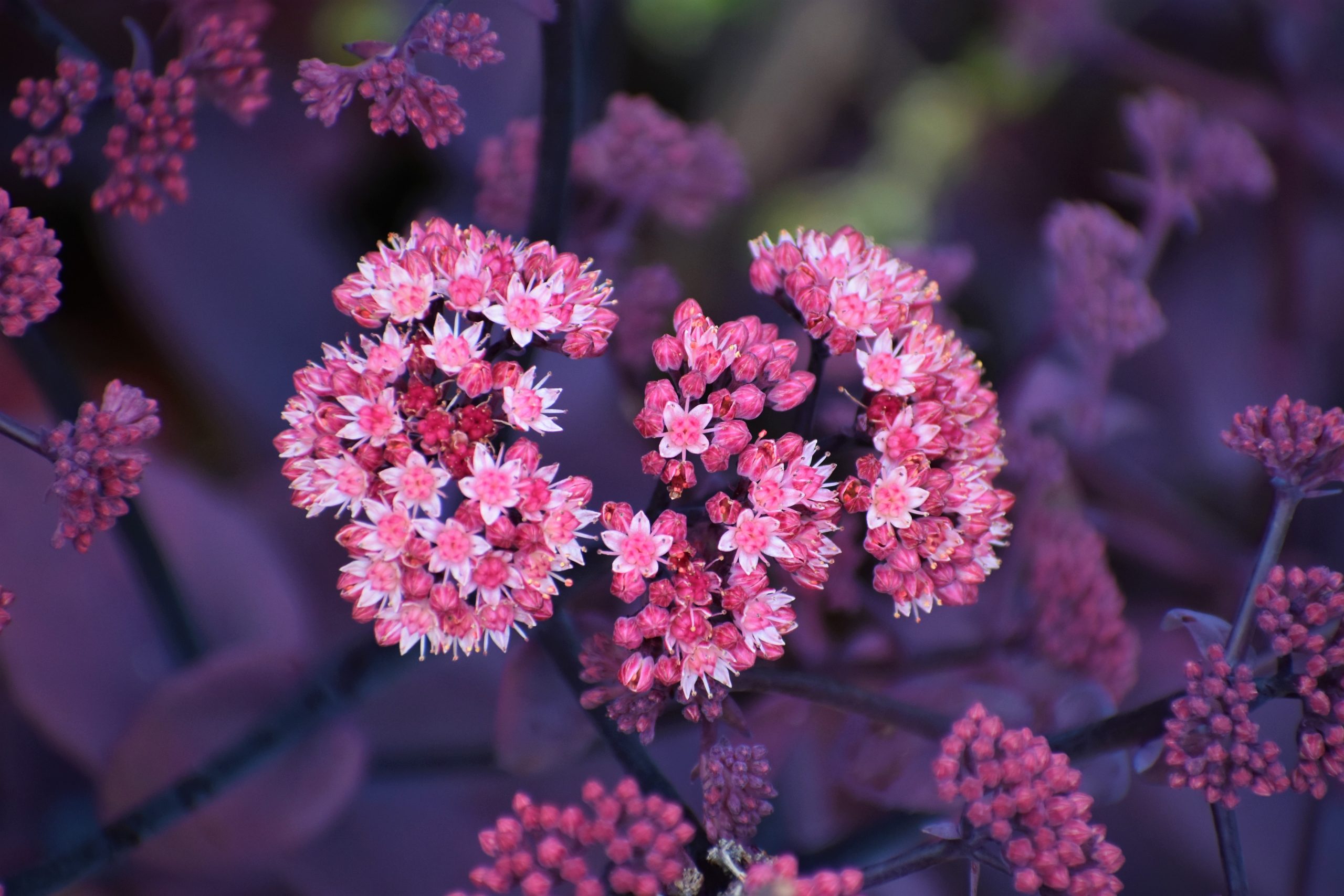Last Updated on April 12, 2024 by Real Men Sow
Sedum plants are succulent plants, their leaves are fleshy and flat with nectar-rich flower heads that pollinators appreciate. They are easy to grow and are sun-loving perennials. Border sedums look great from Spring onwards, their flowerheads are green in spring and become pink from August onwards.
You should keep the dead flower heads on your plants. They look amazing covered in frosts. They can be cut and displayed in a vase for many months.
True sedum or stonecrops are small, fleshy-leaved succulents that spread like a mat. They are drought-tolerant and come from dry, rocky areas. Sedums are known for their attractive, evergreen leaves and small, nectar-rich flowers which attract pollinating insects. These plants can be used to cover ground, especially on green roofs, as well as being an alternative to grass lawns. These tender varieties are excellent house plants, and can also grow outside in containers during summer.
How To Grow Sedum Plants
Border sedums (Hylotelephium), thrive in sunny areas with well-drained soil. They are best planted at the border. You can group several together. If your soil is not dry, they are an excellent choice. These plants require little maintenance. However, you can try the Chelsea cut in May to keep the plant from bursting in the middle.
Stonecrops require a sunny area and well-drained soil. They are drought-tolerant and don’t require much watering. To ensure drainage, add some grit to the compost if you are growing them in a container.
Where to Plant Sedums
Border sedums need sun and well-drained soil in order to thrive. They are a low-growing plant and look best when placed at the border. Combine them with plants that have different shapes of flowers, such as umbels or spikes.
Stonecrops require well-drained soil, and a sunny spot that is sheltered. You could use a terracotta or window box, or a roof with some growing medium.
Planting Sedums
Spring and Summer is the time to plant border sedums. To ensure drainage, dig a hole the same size as the original pot. Water in well. Sedums require little watering after they have been planted, as they are drought-tolerant.
To ensure drainage, add plenty of grit to your compost if you are growing stonecrops inside a pot.
Taking Care of Sedum Plants
Cut back border sedum flowerheads in February and March. You will notice tiny rosettes of new foliage at the plant’s base. Mulch the plant’s base with composted garden manure or well-rotted garden soil. You can try the ‘Chelsea Chop,’ which involves removing half the stems to the ground in May. This will make your plant less likely to fall apart in the middle of summer.
Stonecrops in pots require very little aftercare or pruning. Avoid watering during winter.
Propagating Sedum Plants
If your border sedums have got too big or you would like more, you can divide them in spring – dig the plant up carefully, and prize it into sections, and replant them where you would like them to grow. Water in well. You can divide border sedums every three or four years.
Stonecrops can be propagated by cuttings or offsets from the main plant. In spring or summer, take the plant out of its pot (or lift from the soil) and gently separate the offsets from the main plant. They should come away easily, complete with a piece of stem. Plant each offset in a small pot – it will grow into a new plant. Alternatively cut the plant in half, using a bread knife and replant both new plants.
Border sedum (Hylotelephium) Varieties To Try
Hylotelephium speculare ‘Carl” produces masses of bright, flat-colored flowerheads on upright stems in autumn. Formerly known as Sedum spectabile.
Hylotelephium “Herbstfreude” has succulent, green leaves and salmon-pink summer blooms. They mature to orange-red in the autumn. It’s an excellent late source of nectar, especially for butterflies and other sedums.
Hylotelephium Telephium “Purple Emperor” is grown for its leaves, which become darker with age. It bears large numbers of pink flower buds that open to white in summer. They look stunning in the winter garden, where they are surrounded by frost.
Stonecrop Varieties To Try
The Corsican stonecrop Sedum dasyphyllum, also known as Sedum dasyphyllum, thrives in dry, hot conditions. The star-shaped flowers appear in the early summer, and the leaves turn purple during winter. It is ideal for growing between stepping stones or on green roofs, and can even be used to replace a lawn if the conditions are right.
Sedum reflexum, a hardy species that is native to Europe and the UK, is an example of this. It is fast-growing and provides ground cover. In summer, it attracts pollinating insects with its nectar-rich yellow flowers and evergreen leaves. Use it in combination with sempervivums or other hardy Sedums.
Sedum morganianum “Burrito”, or donkey’s tail has trailing succulent leaves on its tail and pink star-shaped summer flowers. It is a tender sedum and can be grown indoors on a windowsill.
Sedum spathulifolium Cape Blanco has distinctive leaves that shine in winter and small yellow flowers in the summer. It needs protection against winter frosts in colder areas. It has been awarded the prestigious Award of Garden Merit by The Royal Horticultural Society (AGM).


